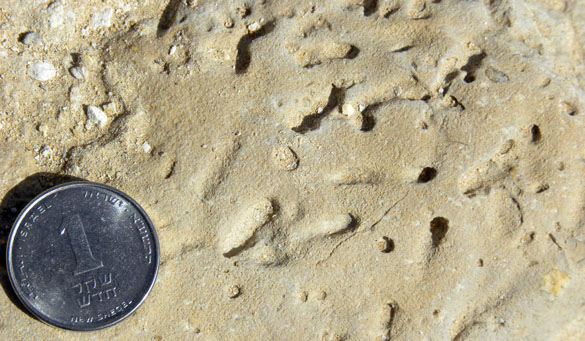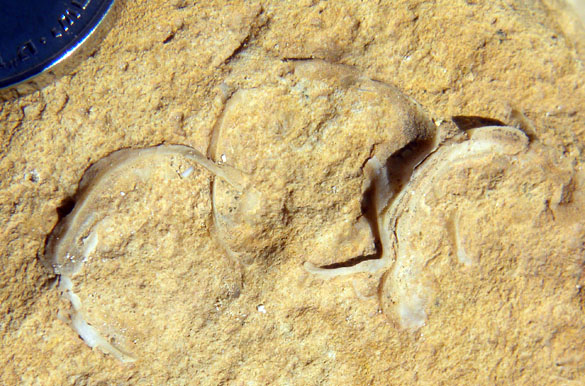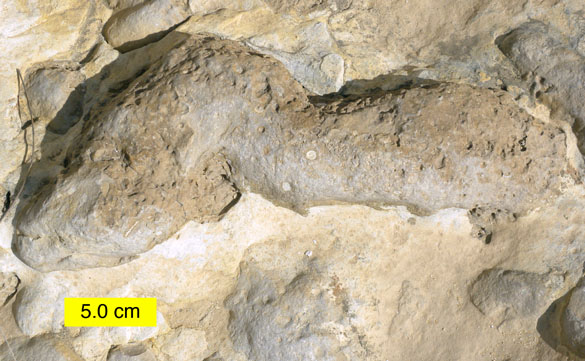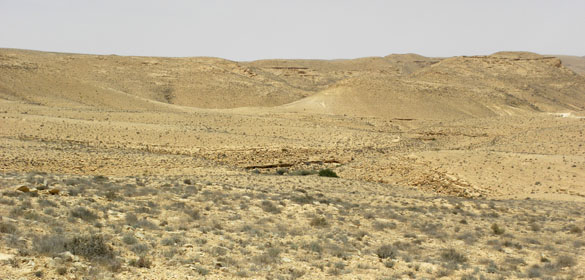 MITZPE RAMON, ISRAEL–Sclerobionts are organisms that live on or in a hard substrate. Paul Taylor and I coined the term in 2002, so I use it as often as I can. Maybe someday more than six people will know what it means. A project for this year’s Israel field expedition is to revisit a locality where an extensive bed of hiatus concretions, most of them bored or encrusted by sclerobionts, is found between the Zihor and Menuha formations in the Upper Cretaceous. (This layer is pictured above.) Andrew Retzler and Micah Risacher will remember the Wadi Aqrav (Scorpion Wash) sections well from their Independent Study work last year. These hiatus concretions were formed when deep erosion produced a disconformity and a lag of cobbles. We already had a GSA presentation on this topic; now we need more information for a future paper.
MITZPE RAMON, ISRAEL–Sclerobionts are organisms that live on or in a hard substrate. Paul Taylor and I coined the term in 2002, so I use it as often as I can. Maybe someday more than six people will know what it means. A project for this year’s Israel field expedition is to revisit a locality where an extensive bed of hiatus concretions, most of them bored or encrusted by sclerobionts, is found between the Zihor and Menuha formations in the Upper Cretaceous. (This layer is pictured above.) Andrew Retzler and Micah Risacher will remember the Wadi Aqrav (Scorpion Wash) sections well from their Independent Study work last year. These hiatus concretions were formed when deep erosion produced a disconformity and a lag of cobbles. We already had a GSA presentation on this topic; now we need more information for a future paper.
Will and I hiked through Wadi Aqrav today to collect more information about these Cretaceous cobbles. We found all our previous study sections and a few more outcrops of the Zihor/Menuha formation boundary. Most important, we were able to collect more sclerobionts and other associated fossils.

Eroded borings in the surface of one cobble. These are holes in the rock, but if you stare at them long enough they will suddenly look like bumps!

Three oysters on a cobble surface. Two grew together at the same time and one came later. Can you tell which?






Pingback: Wooster Geologists » Blog Archive » Cobbling together a Late Cretaceous story